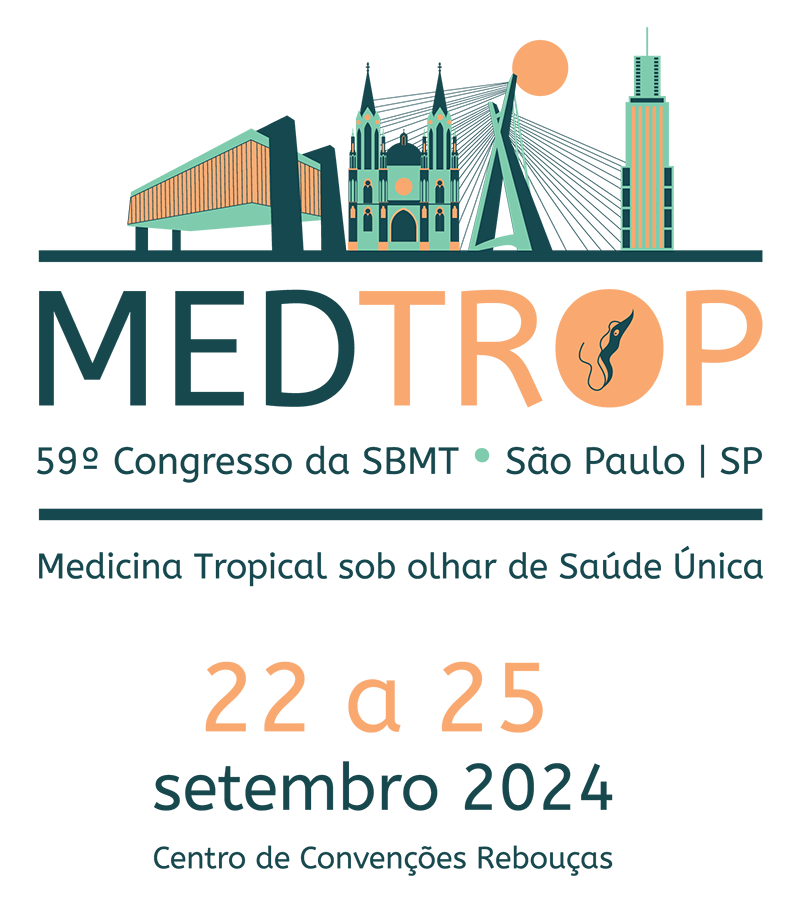Dados do Trabalho
Título
Shedding light on cutaneous leishmaniasis treatment: in vitro profiling of repositioned and novel compounds targeting amastigotes ex vivo and various mammalian cell types
Introdução
Chemotherapy for cutaneous leishmaniasis is hindered by high costs and adverse effects, compromising the quality of life for approximately 1 million people worldwide. Developing new safe and selective leishmanicidal agents is crucial and can be effectively guided by in vitro assays targeting clinically relevant amastigotes and various cell types.
Objetivo (s)
Thus, we evaluated the activity of POD-1, methylene blue (MB), new methylene blue (NMB) and its complexes (NMB-B and NMB-P) on ex vivo amastigotes of Leishmania amazonensis LTB0016 (106 parasites/mL) and mammalian cells (L929, HEpG2, VERO, J774.G8 and MØ - 105 cells/mL).
Material e Métodos
Parasites and cells were treated or untreated (negative control - C-) with the compounds under serially diluted concentrations in 96-well plates. Cell viability after 24 hours was assessed using the Alamar Blue assay to determine IC50, CC50 and selectivity index (SI). Miltefosine (MT) was used as a reference compound. Drug-treated parasites (with IC50) were further analyzed by flow cytometry using 7-AAD, TMRE and H2DCFDA markers.
Resultados e Conclusão
The compounds significantly inhibited parasite proliferation in a dose-dependent manner compared to the C- (p<0.0001). The IC50 values for POD-1, MB, NMB, NMB-B, NMB-P and MT were 0.45, 15.65, 2.66, 3.16, 0.46 and 0.97 μM, respectively. The ranging of CC50 (μM) / SI values of the compounds for each cell type were: L929 (from 112.71/116.19 to >1.000/2,222.00), HEpG2 (from 34.24/10.83 to >1.000/2,222.00), VERO (from 44.73/16.81 to >1,000/2,222.00), J774.G8 (from 68.50/25.75 to >1,000/2,222.00) and MØ (from 31.27/11.75 to 102.93/106.11). Flow cytometry revealed 25.33% to 61.05% 7AAD+ events with statistical significance for all compounds (p<0.05). Compared to C-, POD-1 caused the greatest reduction in ΔΨm (74%) and NAM the least (43%). For ROS production, increases ranged from 0.79-fold with NAM to 1.24-fold with POD-1. The data indicate a hit-to-lead profile for the tested compounds with IC50<4 μM (except for MB) and SI>10. Notably, POD-1 and NAM-P exhibiting submicromolar inhibitory concentrations, even lower than MT. The observed leishmanicidal effect may be attributed to ROS-induced mitochondrial damage. Low to moderate toxicity in mammalian cells highlights the importance of in vitro assays across diverse cell types for optimal selection before progressing to in vivo and clinical studies.
Palavras Chave
Leishmaniasis; Chemotherapy; Repositioned drugs; Methylene blue
Área
Eixo 06 | 2.Protozooses humanas e veterinárias - Leishmaniose
Prêmio Jovem Pesquisador
4.Não desejo concorrer
Autores
Deyvison Rhuan Vasco-dos-Santos, Juliana Almeida-Silva, Ludmila Ferreira Almeida Fiuza, Natalia Vacani-Martins, Zênis Novais Rocha, Tamires Mariel Muniz Milhazes, Maria Nazaré Correia Soeiro, Andrea Henrique-Pons, Eduardo Caio Torres-Santos, Marcos André Vannier-Santos

 Português
Português English
English